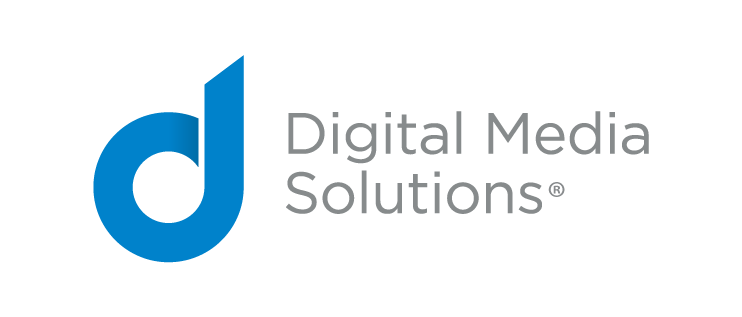2020 was a strong year for ecommerce performance. Even as some pre-pandemic behaviors return and vaccines continue to roll out, the ecommerce outlook remains positive. Statista data showed that digital spending increased across all age demographics, with 65% of Gen Zers, 63% of Millennials, 60% of Gen X, and 47% of Baby Boomers reporting that their digital spending climbed since May of 2020.
As part of this ecommerce growth trend, consumers more frequently comparison shopped online. The Adobe 2021 Digital Trends report revealed that more than one-third of respondents expressed less loyalty to brands or products. As a result, digital advertisers must continue to find effective ways to connect with high-intent consumers, especially those who abandon their shopping carts before completing transactions. Push marketing is a relatively new approach that allows advertisers to directly engage consumers with targeted push notifications that encourage action, such as making purchases. While email marketing and other retargeting methods remain effective, push marketing provides advertisers with an additional way to quickly connect with consumers on both desktop and mobile devices.
The Brevity Of Push Notifications Focuses Messaging On Consumer Pain Points
Web push notifications provide digital advertisers with a small number of characters to get their messages across. Advertisers should use the limited space to persuade consumers to take action by addressing common pain points that the abandoned products could address. Advertisers can infuse this persuasive copy into the headline, body copy or action buttons of the push notification. A headline like “Morning sun getting you down?” would be relevant for window treatment companies, like 3 Day Blinds. An additional action button saying “Sleep better now” may also help persuade the consumer to finish their purchase. The limited number of characters does not mean messages are less effective, but rather it pushes advertisers to be efficient, sharing the right message at the right time, persuading targeted consumers to go back and finish their purchases.
Push Marketing Lets Advertisers Test Sale Structures To Determine What Drives Conversions
Incentives remain an effective method for retargeting consumers. To further optimize retargeted push campaigns, advertisers can test different sales or incentive language to determine what drives the most engagement and, ultimately, the most conversions. Some consumers may respond better to buy-one-get-one incentives, while others may prefer simple percentage discounts. Digital advertisers should consider testing out varying incentives to see which tactics result in the highest conversion rates. Free shipping is currently a hot incentive, as shipping costs remain one of the top reported reasons why consumers abandon their carts in the first place, but free shipping does not convince everyone to take action.
Advertisers Can Maximize Sales Potential By Cross-Selling Or Up-Selling Abandoned Carts With Push Notifications

Digital advertisers can consider taking more personalized approaches to retargeting abandoned carts by cross-selling or up-selling items based on what’s in consumers’ carts. Allowing brands and retailers to show off additional products that consumers may not have seen, cross-selling and up-selling have long been effective ways to engage consumers and increase cart size,
For advertisers looking to reclaim abandoned carts and increase average order value, carefully crafted push notifications may help achieve both. Advertisers should make sure that the cross-sell or up-sell messaging features related items that consumers are likely to be interested in to maximize campaign effectiveness.
Personalization Within Push Notifications Can Encourage Digital Window Shoppers To Take Action
Digital window shopping reached an all-time high in 2020. As consumers continue to evolve in the post-pandemic world, advertisers must remain agile to retarget consumers at varying intent stages. Push marketing allows advertisers to personalize push notifications that engage consumers with relevant messages they are more likely to click.
A retargeted push notification is inherently more personalized and relevant than other broad campaigns, but additional personalization can further optimize notifications to maximize the click-through rate. Digital advertisers should consider adding consumer names, product names and product images to push notifications. Push technology enables advertisers to create personalized messages of this kind at scale, utilizing dynamic elements that help advertisers reach consumers with the right messages at the right times.
Ecommerce brands continue to face abandoned shopping carts, especially as digital window shopping remains prevalent in today’s digital marketplace. Push marketing provides brands with an additional avenue for retargeting consumers and recapturing carts and increasing revenue. Advertisers using push notifications should consistently test strategies, including up-selling and cross-selling messaging, incentives and messaging that hones in on consumer pain points. All push campaigns should rely on personalization to engage consumers more effectively and maximize conversions.
Are You Looking For Innovative Ways To Retarget Your Audience?
Digital Media Solutions® (DMS) offers a variety of solutions to help brands achieve their advertising objectives. Engage and retarget your audience while building lasting connections with highly targeted push notifications, in-app messages and email enhancements with our self-managed and fully-managed push marketing solutions. With optimized messaging campaigns sending to segmented lists of consumers, you can reach the right person at the right time.
Click here to learn more about Aimtell, our self-managed, push messaging SaaS technology that helps you re-engage website visitors with highly targeted push notifications.



